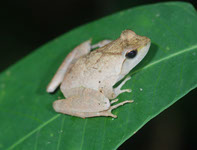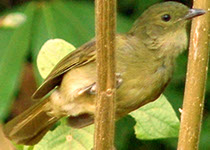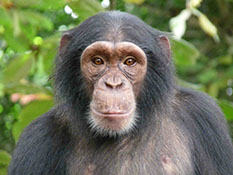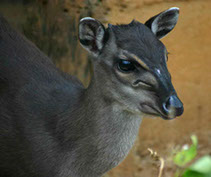Biological Research
Our current project involves studies of nine taxa, which represent a broad range of taxonomic groups that includes vertebrates, invertebrates, and plants. These taxa are divided into three classes to reflect the different levels of methodological and analytical approaches that will be used for this research.
Class I Focal Taxa: Class I comprises a plant (Sarcophrynium prionogonium), an insect (Bicyclus dorothea), and an amphibian (Phrynobatrachus auritus). Two of these species are ectotherms which are increasingly threatened by climate change. All three are distributed across a variety of forest types and across elevational gradients. For these taxa, we will measure morphological, genomic, and plastic variation through experimental analyses. These combined data will allow us to both map Regions of Evolutionary Adaptive Potential (REAPs) and to assess phenotypic responses to environmental change.
Class II Focal Taxa: We will build on extensive morphological and genetic information already available and generate new genomic data to assess adaptive variation for Class II Taxa. However, this group will not include experimental analyses to assess plasticity because of limitations associated with breeding, husbandry, and generation time. Class II taxa includes two passerine birds (Andropadus virens and Cyanomitra olivacea), a rodent (Hylomyscus stella), and a reptile (Trachylepis affinis). All of these species occur in a variety of forested and transitional habitats and are the subject of previous studies.
Class III Taxa: The third class includes two large bodied mammals, chimpanzees (Pan troglodytes) and blue duiker (Philantomba monticola) for which we have extensive genomic resources and geo-referenced non-invasive DNA samples. Class III will not include morphological analyses or experiments to examine plasticity but will instead be limited to identification of REAPS through genomic analysis.





%20cropped.jpg?crc=4028635619)






